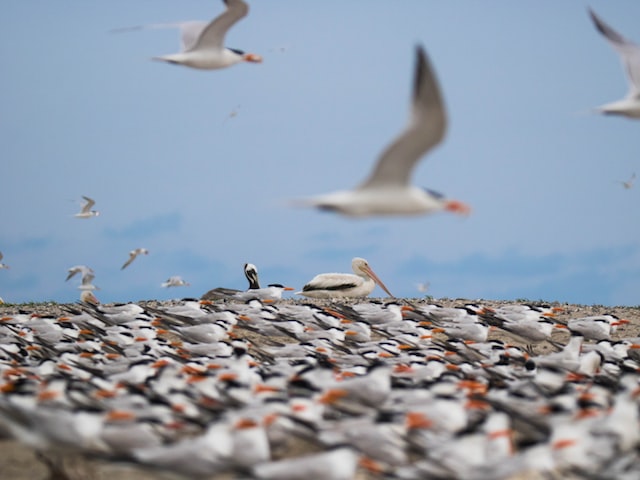Introduction: Protecting Eggs in the Nest

As nature lovers and bird enthusiasts, we understand the importance of protecting the fragile lives nestled in bird nests. The eggs that rest in these delicately constructed homes are the future of our feathered friends, and it’s crucial to ensure their safety during the incubation period. In this blog post, we will explore effective strategies and techniques to prevent damage to eggs in the nesting area. By implementing these tips, you can contribute to the preservation and prosperity of these precious lives.
Body
1. Creating a Sturdy Nest Bed: Protecting Eggs from Impact and Injury
One of the primary causes of egg damage in the nesting area is the lack of a secure and cushioned nest bed. Birds meticulously gather twigs, leaves, and other materials to create a cozy and well-insulated nest. By fortifying the nesting area with a sturdy base, the eggs are shielded from the jolts and bumps that come with external factors such as wind or accidental contact with tree branches.
To create a stable nest bed, consider the following tips:
- Choose an appropriate location: Ensure that the nest is built in a location protected from strong winds and potential disturbances.
- Use resilient materials: Encourage the use of sturdy materials like twigs, grass, moss, and leaves to construct a firm foundation for the eggs.
- Regular maintenance: Check the nest periodically and provide additional support if needed, replacing any damaged or weakened structural elements.
By providing a robust and secure nesting environment, you can significantly reduce the risk of eggs being damaged due to external factors.
2. Avoiding Excavation and Nest Intrusion: Protecting Eggs from Predators
Natural predators play a significant role in maintaining the balance of ecosystems. However, when it comes to protecting bird eggs, it becomes necessary to take preventive measures against nest intrusion. Various animals, including squirrels, raccoons, and snakes, can pose a threat to bird eggs. To safeguard the nesting area from such predators:
- Use deterrents: Place protective barriers, such as wire mesh or netting, around the base of the nest to deter predators from accessing the eggs.
- Keep surroundings clear: Trim any overhanging branches or nearby foliage to eliminate easy access routes for potential nest intruders.
- Install predator guards: Consider installing predator guards on tree trunks or poles to deter climbing invaders.
By implementing these measures, you can minimize the risk of eggs being damaged or consumed by predators, allowing the nestlings to hatch and thrive without unnecessary interruptions.
3. Conscious Handling: Preventing Breakage During Nest Checkups
While it is essential to monitor the health and development of the eggs during the incubation period, it’s crucial to handle them with care to prevent unintentional damage. Here are some guidelines for handling eggs during nest checkups:
- Clean hands: Ensure that your hands are clean and free from any harmful substances before touching the eggs. Avoid using lotions, insect repellents, or any other products that may transfer chemicals onto the eggs.
- Steady approach: Approach the nest slowly and calmly to avoid startling the parent birds. Sudden movements can cause them to abandon the nest or potentially damage the eggs.
- Gentle touch: Handle the eggs with utmost care, using a delicate and steady touch. Avoid excessive pressure or dropping the eggs, as even a minor impact can result in irreversible damage.
- Limit frequency: Limit nest checkups to the necessary minimum to avoid unnecessary stress or disturbance to the nesting birds.
Implementing these careful handling practices will help ensure the safety of the eggs during inspection, enabling you to monitor their progress while minimizing any potential harm.
Conclusion: Embrace the Role of Protector

As we conclude this blog post, let’s remember that the protection of bird eggs in their nesting habitats is essential for the survival and conservation of avian species. By creating a solid nest bed, preventing intrusions from predators, and handling the eggs with care during checkups, we can make a positive impact on their delicate lives. Let’s embrace our role as protectors of nature’s most vulnerable miracles.
For more information and inspiration on bird conservation and protection, refer to the following video:
Remember, every small effort counts toward safeguarding the future of our feathered friends. By taking these preventive measures, you contribute to the preservation and prosperity of bird species for generations to come.
We invite you to share your own experiences and tips on protecting eggs in the nesting area in the comments section below. Together, let’s create a community dedicated to the welfare of our avian companions!
Leave a Reply